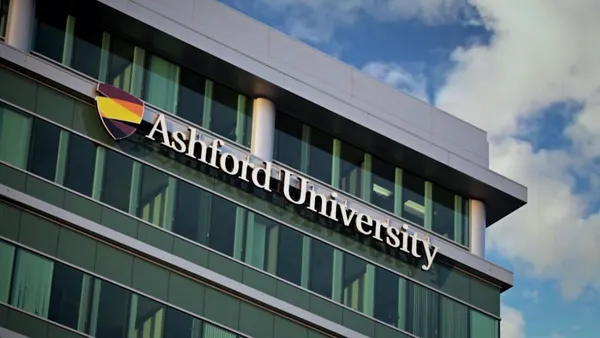As market conditions evolve, higher ed leaders are striving to build a profitable future amidst chronic funding obstacles. Between roadblocks like disruptive online competition, evolving demographics, crippling student debt and dwindling enrollment, traditional operating models cannot produce enough gains to satisfy market demands, argues KPMG.1
It's one reason why many institutions are exploring inventive ways to free up and generate funds without hampering student and staff experiences. As higher ed leaders look to diversify funding sources, repurposed real estate is emerging as a significant bottom-line booster.
Repurposing square footage for more profitable uses
Across the country, institutions are becoming more entrepreneurial and joining forces with community and business partners. That's resulted in unconventional solutions, like repurposing square footage for more profitable uses. "As one of the largest expense categories in higher education, campus facilities are a potentially powerful source of savings and revenues in today's challenging fiscal environment," reports JLL, a commercial real estate firm.2
At one midwestern university, leaders have worked with a coworking space firm to provide businesses with office space, giving them access to campus resources.3 At other institutions, leaders lease lab or testing spaces, rent rooms for events, open stores and cafés, and collaborate with industry on business incubators, consulting and talent development initiatives.4 Even as online offerings grow, some schools lack the square footage they need to expand programs.
Finding those spaces when funds are tight may require examining current facility uses and reshuffling or replacing physical operations whose drain on finances exceed their benefits.
Rethinking print and parcel operations
Generally speaking, some of the most expensive and wasteful campus operations are in-house print shops and parcel management storage locations. "You have in-house operations such as print, mail and parcel consuming large spaces when real estate is at a premium. You also have multifunction print devices at a fixed cost that are likely seeing usage levels decline as universities offer remote and hybrid learning. Meanwhile, you're maintaining hundreds, if not thousands, of machines that aren't used to their full capacity. That's a lot of needless fixed costs, versus paying only for what you need," explains Joe Polizzi, a regional account manager with FedEx Office.
Joe and his counterpart, Heather Strange, help colleges and universities solve that conundrum with custom arrangements where FedEx Office shoulders the weight of mail, print and parcel operations which can help schools shed those costs and free up square footage while potentially enhancing efficiencies, access and benefits to the campus community.
One prominent university had its largest college suffer a nearly 25% budget cut in the last two years. "It was no longer feasible to keep the on-site print shop open," Heather recounts: "They had a massive on-site print management operation with heavy overhead. They were leasing all their equipment and managing copyright releases, with four full-time employees."
After an assessment, FedEx Office proposed taking over those costs and responsibilities. "We replaced a massive amount of expenses. The university significantly streamlined operational expenses with a single decision," says Heather, noting that the university reduced the expenses but not the benefits to student and staff. The transition went smoothly, and the college was able to put money back into its budget, plus clear facilities for other uses.
Cutting costs to add benefits
Though FedEx Office customizes solutions with varying levels of service, some of its client institutions enjoy added incentives on top of built-in savings that come with outsourcing print and parcel management. Some solutions involve opening a FedEx Office store on campus, while others leverage nearby stores and the nationwide network FedEx Office offers.
"In one scenario, FedEx Office opens a storefront on campus and becomes part of the auxiliary services community to support students, faculty and staff," says Joe. "This on-campus store can extend personal shipping discounts to the campus community, support student move-in/out activities and facilitate parcel distribution with automated tracking notifications. There are many ways our relationship can enhance student experiences and benefit the campus community," he adds.
In yet another scenario, FedEx Office used a near-site model to help a university close down their internal print shop and redeploy the real estate as additional classroom space to support expanding student enrollment. "The university was looking for additional real estate on campus and there was already a FedEx Office less than a half mile from campus," Joe explains. "The near-site model supports in-store pick-up as well as campus delivery options making this a convenient replacement to their in-house operation. Reduced operational expenses was also a welcome benefit for university leaders," Joe explains.
Any way you slice it, "the bottom line is that a cultural shift is underway," cautions the American Association of Colleges and Universities: "Universities [must] broaden their thinking and become more resourceful — and aggressive — about securing revenue."5 For many, a viable revenue source lies right under their feet. Learn more about FedEx Office solutions today.
Sources
[4] Money matters: Revenue diversification for higher education | L.E.K. Consulting
[5] Rethinking Revenue | AASCU










